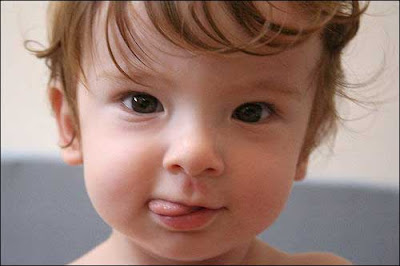Tuesday, July 14, 2015
Upper Cervical Care Helps One Year Old With Congenital Torticollis and Paroxysmal Tonic Upgaze Syndrome
On June 29, 2015, a study was published in the Journal of Upper Cervical Chiropractic Research documenting the case of chiropractic helping a baby boy who was suffering with Paroxysmal Tonic Upgaze (PTU) Syndrome, torticollis, and other neurological problems. These issues seemed to be related to the birth trauma the infant received during delivery.
Paroxysmal Tonic Upgaze (PTU) is when a child usually has his or her eyes fixed in a upward position. The child may even tilt their head downward to gaze forward. This may make the child look angry when they are not. Babies affected by this problem can display jerky side to side moment of their head, and may also have sleep issues, developmental delays, and vertigo.
The study reports that the word "torticollis" means twisted neck in Latin. Generally, congenital muscular torticollis (CMT) involves a deformity of the neck where one side of certain neck muscles are shorter than the other. Many factors are proposed to be the cause of this including trauma during the birth process. This problem is often painful and causes a restricted range of motion.
This case involved a 13-month-old boy who was brought to the chiropractor by his mother for a chiropractic evaluation to see if her son could be helped with PTU, congenital torticollis, and infantile spasm/tremors. The infant had already undergone a number of neurological tests and an MRI which did not give any definitive answers. This frustration led to the boy's parents bringing him to the chiropractor.
The history of the infant birth revealed that the pregnancy and delivery were difficult. The mother was in labor for 2 weeks. During delivery, the baby was laying on his back and presented 'face' first, causing the breaking of his mother’s coccyx during the delivery. At one month of age, the child was vaccinated. Shortly thereafter, the mother noticed the muscle spasms and a tilted head. Three weeks later, the child began to hit the back of his head aggressively.
A chiropractic examination was performed including palpation, range of motion, and postural analysis. Based on the findings of the examination, it was determined that the goal of the care should be to correct the subluxations detected in the infant's spine. Specific chiropractic adjustments were started and continued over a period of four months.
The study reported that during the first re-examination, the mother reported that her son was sleeping better and his neck spasms had reduced. She also reported that his upward gaze had decreased thus showing improvement in his diagnosed PTU condition. As care continued, the boy crawled better and his coordination improved. The boy was under care at the time of the writing of this report and continued to show improvement in all his health issues.
In their discussion, the authors of the study explained the mechanism of how correction of subluxation could help this boy by stating, "When a subluxation is present it blocks communication and sensory input between the brain and the body and can lead to neurological dysfunction. This dysfunction without any correction leads to further damage. When a subluxation is present and left uncorrected it will lead to sensory input dysfunction."
(Editor's note: Remember the objective of upper cervical care is to correct head neck misalignment that is interfering with proper brain to body communication. When this is corrected the body functions at a higher level and can often correct other problems more efficiently on its own. Please do not confuse upper cervical care as a treatment for any condition, disease or symptom.)




